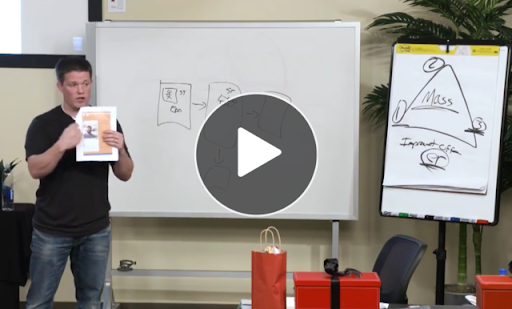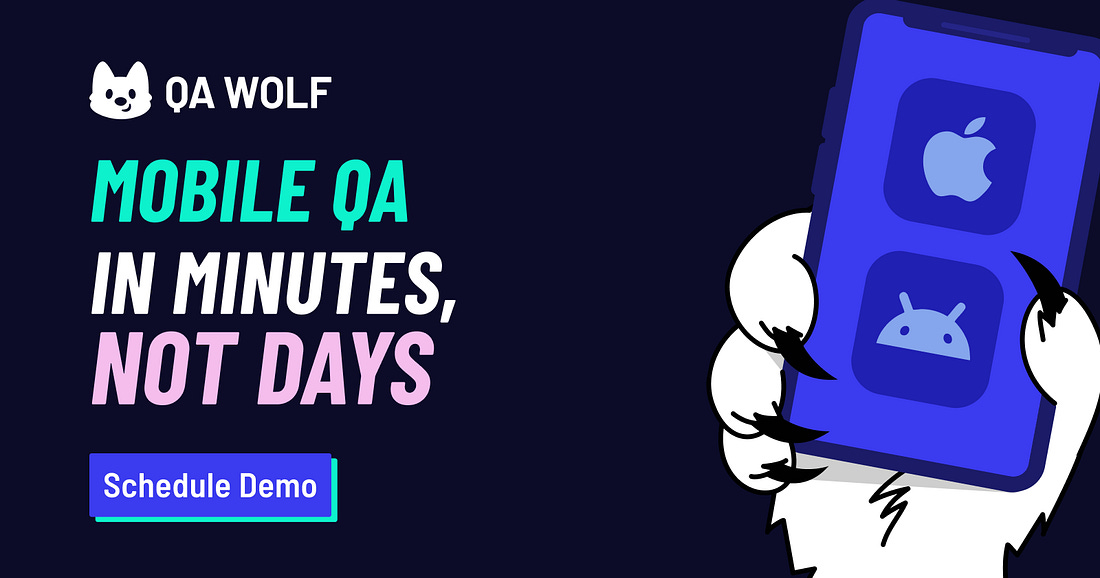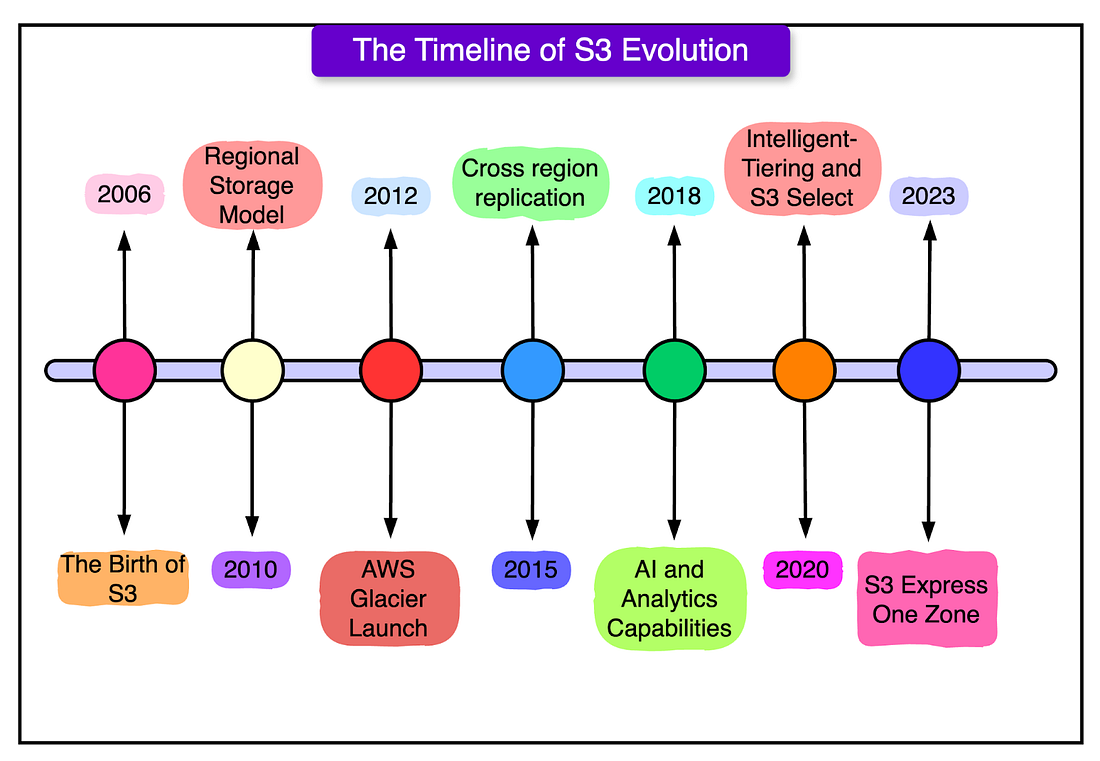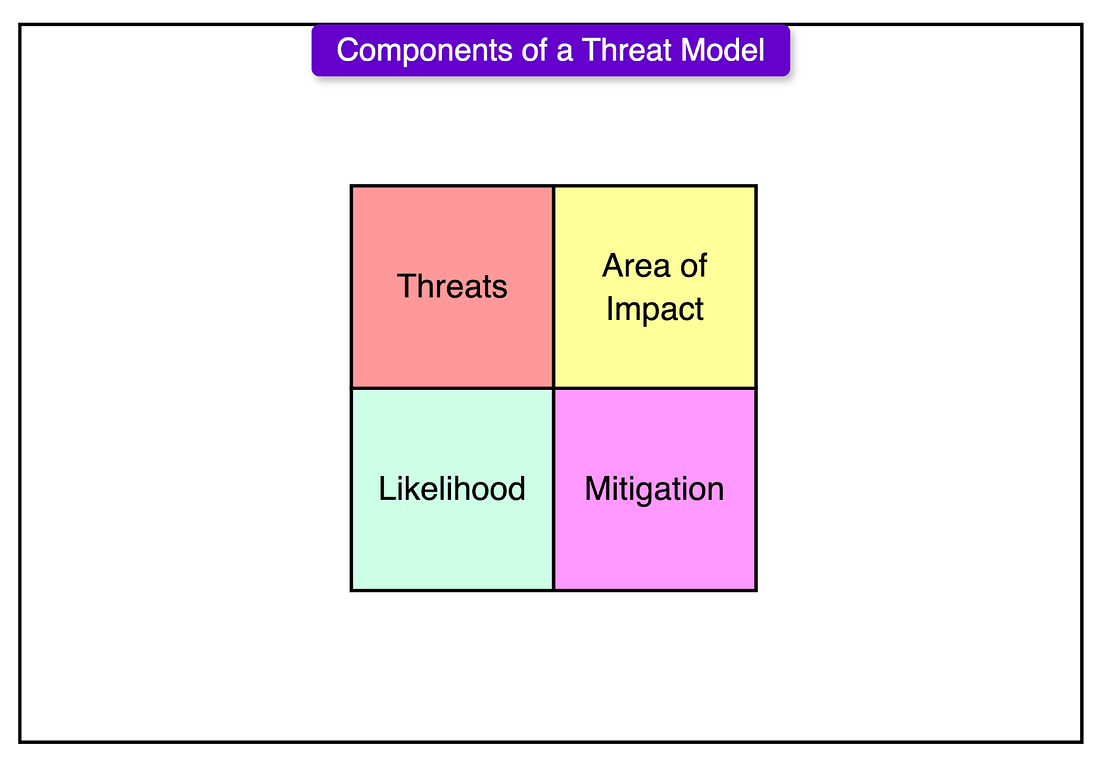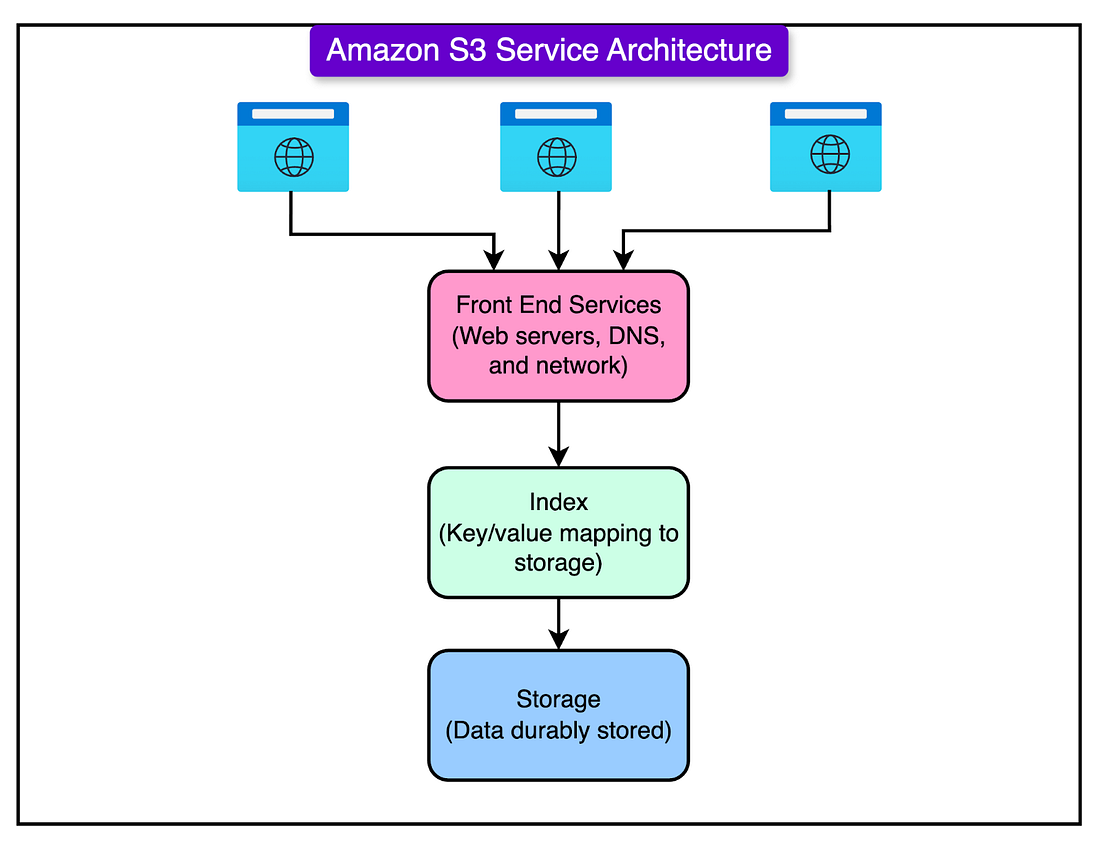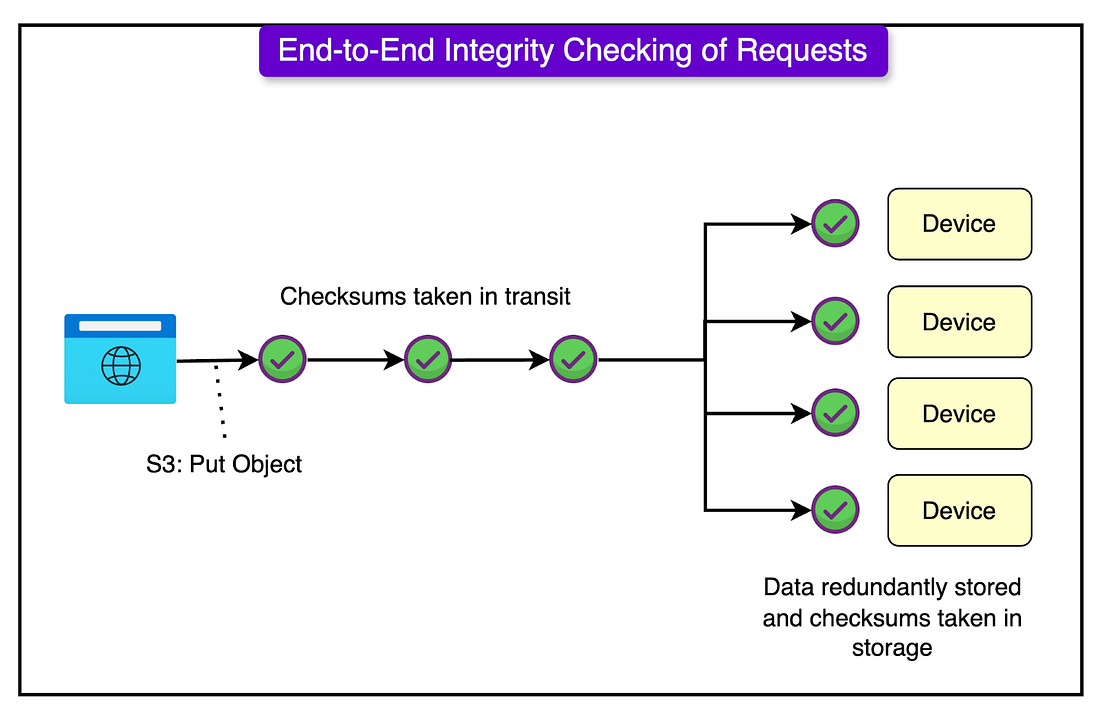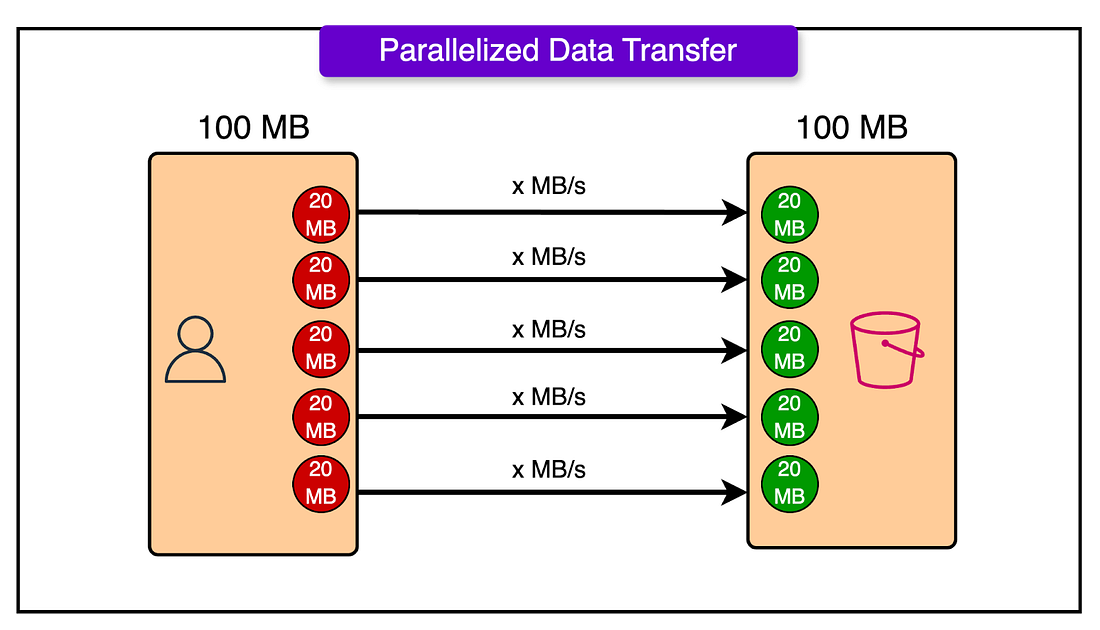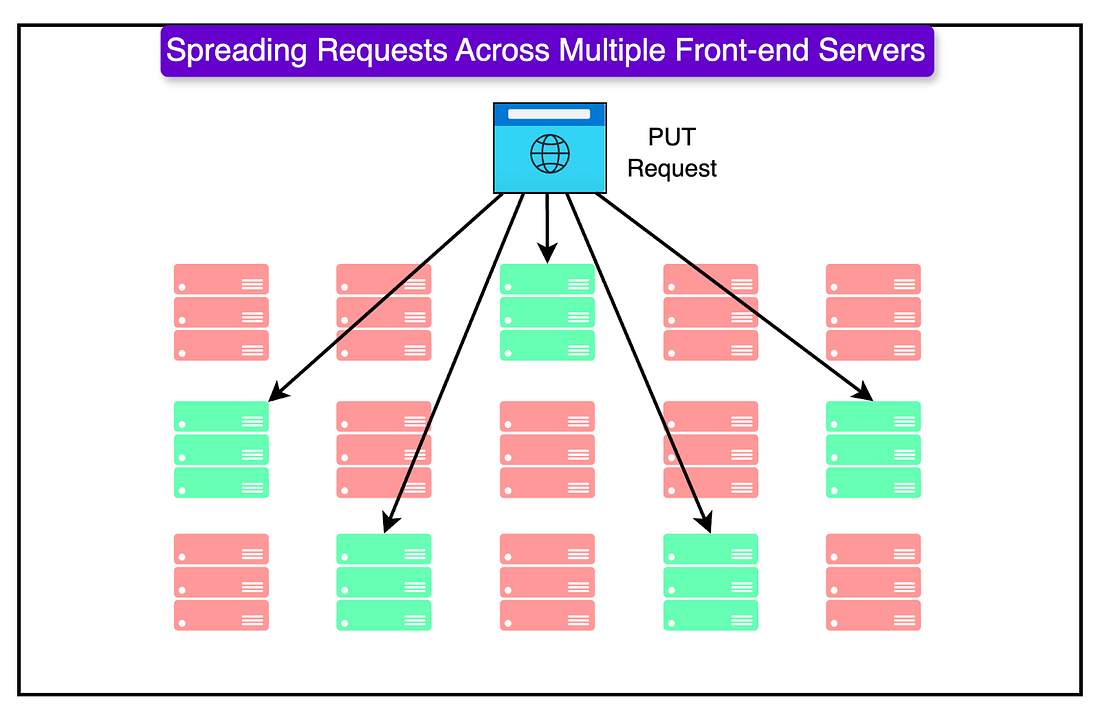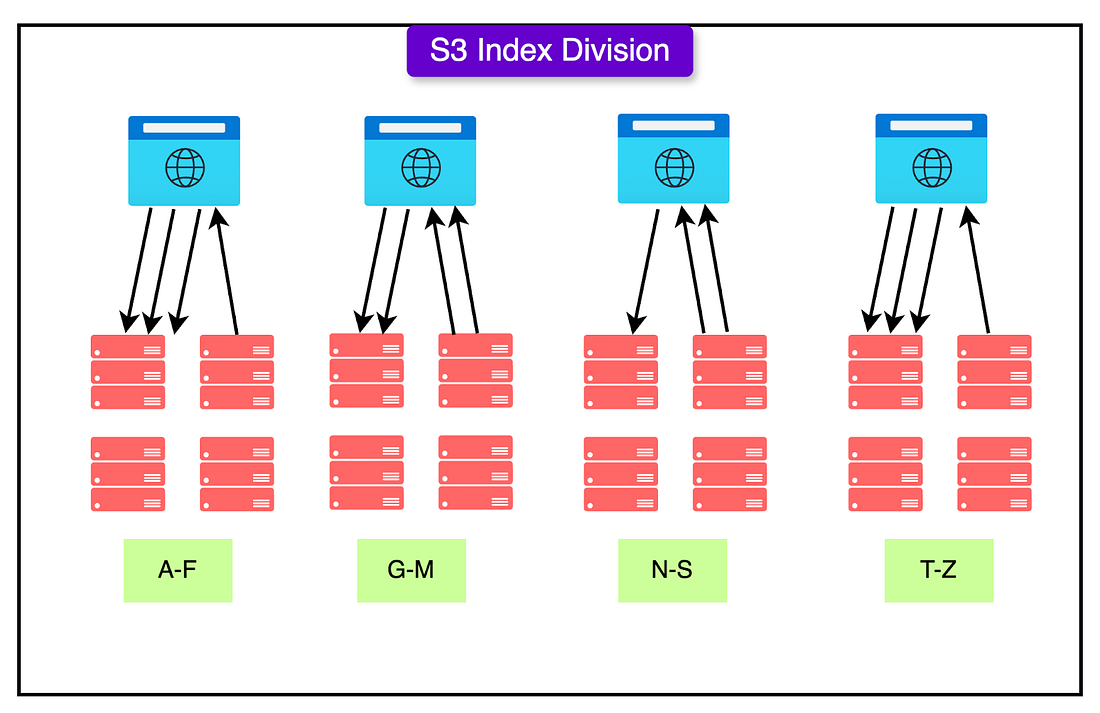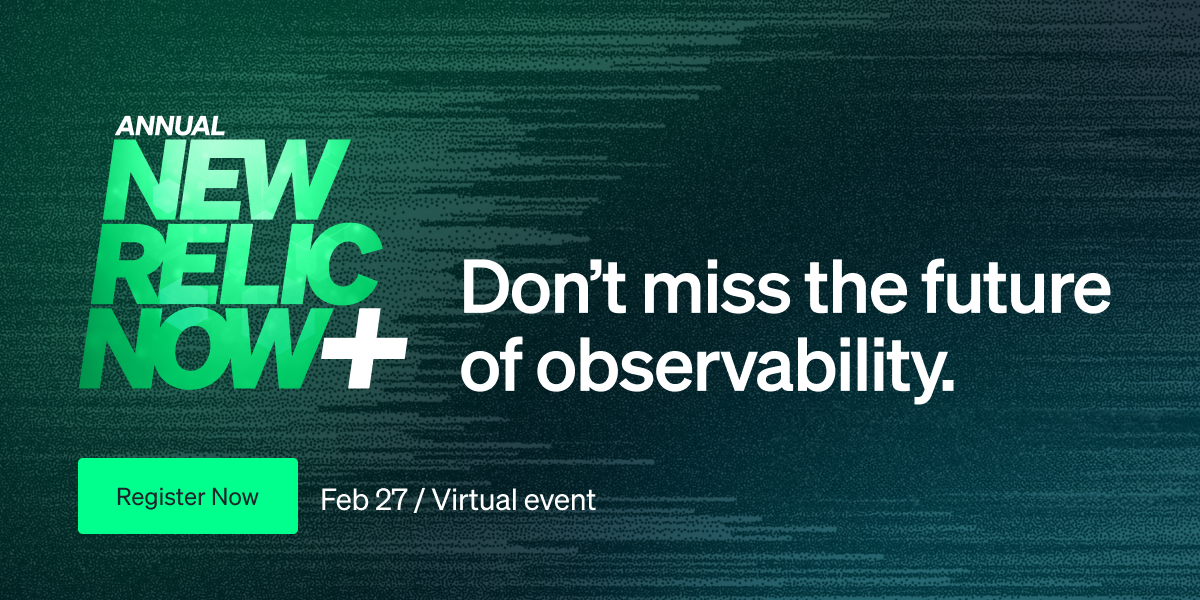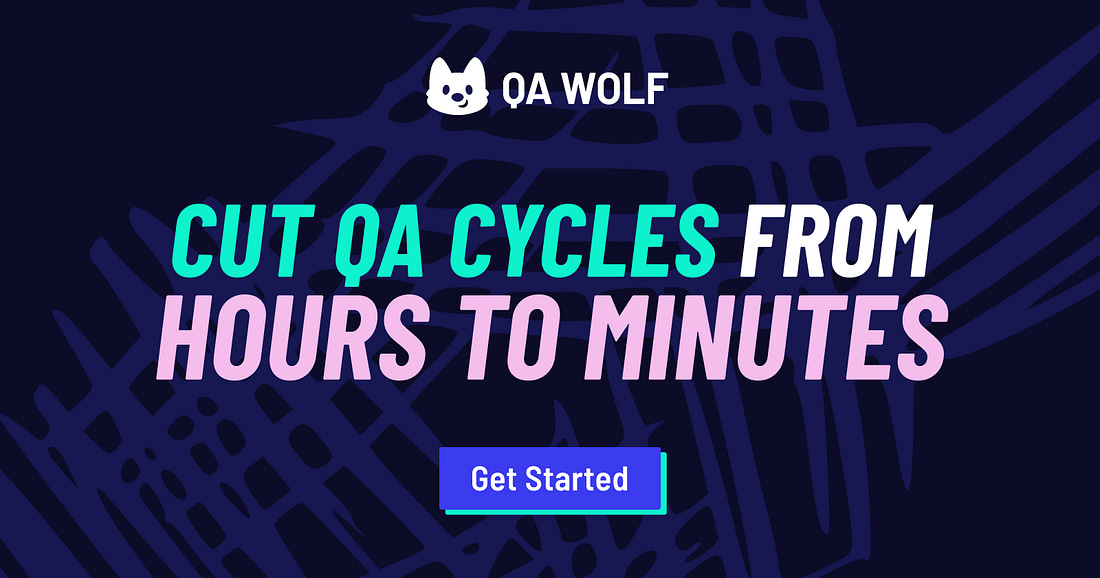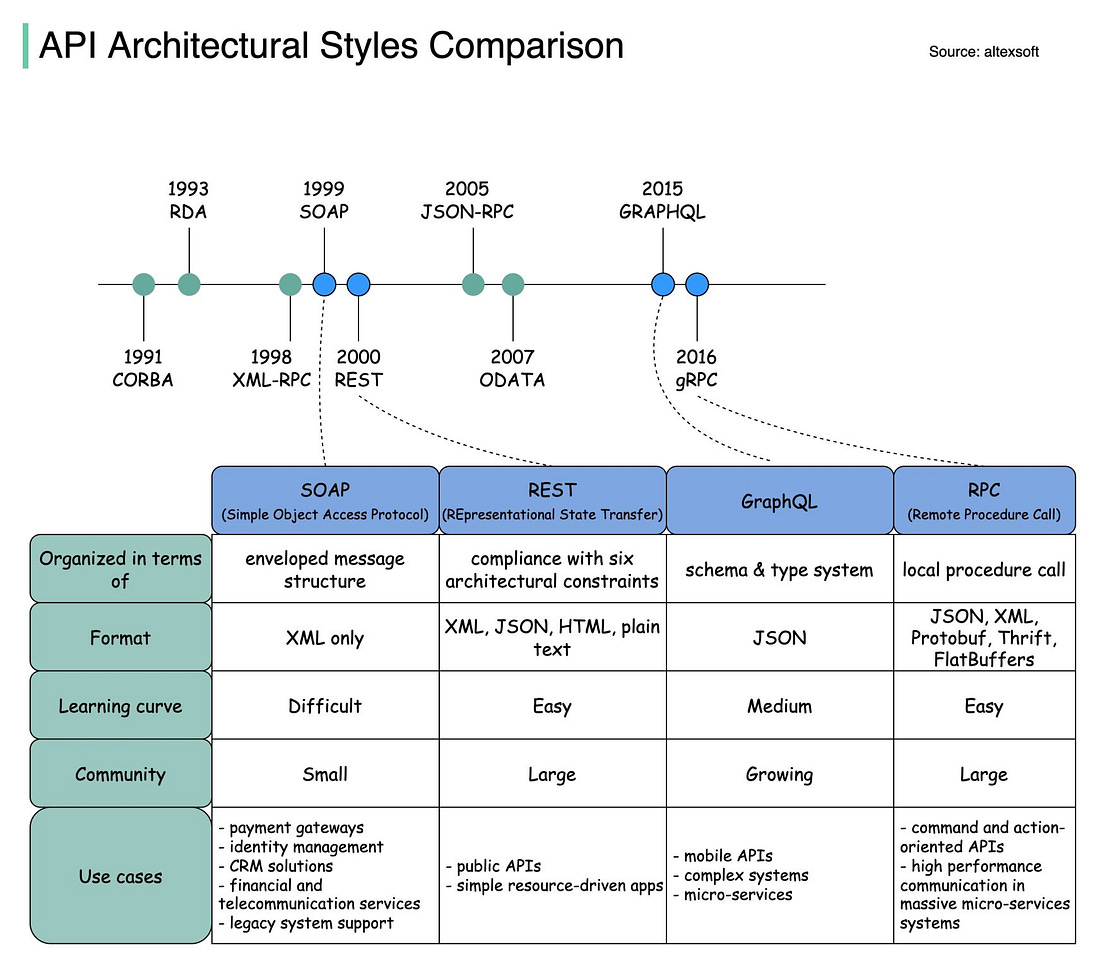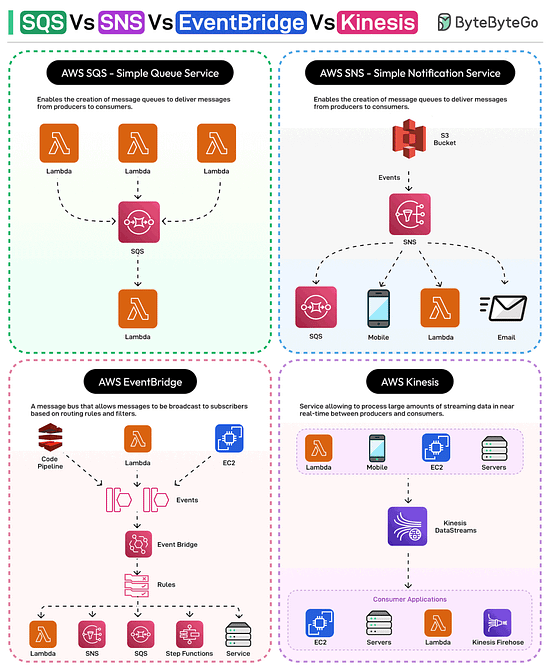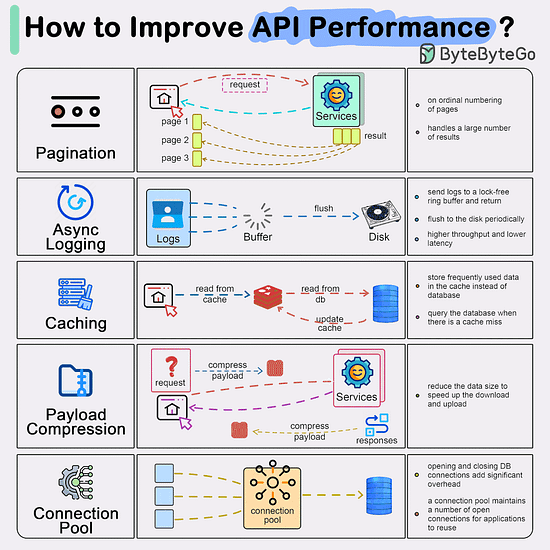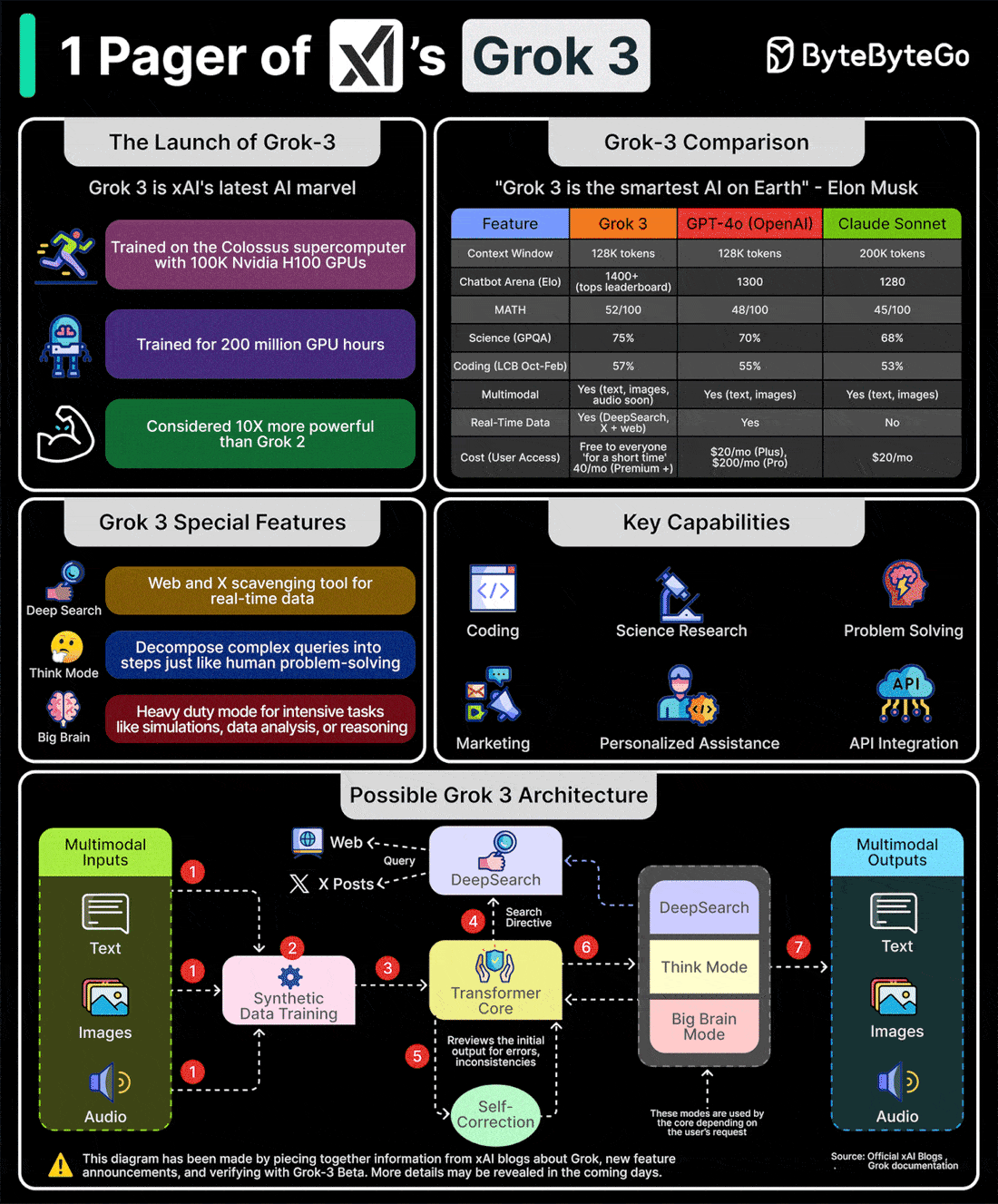Archives
- By thread 5231
-
By date
- June 2021 10
- July 2021 6
- August 2021 20
- September 2021 21
- October 2021 48
- November 2021 40
- December 2021 23
- January 2022 46
- February 2022 80
- March 2022 109
- April 2022 100
- May 2022 97
- June 2022 105
- July 2022 82
- August 2022 95
- September 2022 103
- October 2022 117
- November 2022 115
- December 2022 102
- January 2023 88
- February 2023 90
- March 2023 116
- April 2023 97
- May 2023 159
- June 2023 145
- July 2023 120
- August 2023 90
- September 2023 102
- October 2023 106
- November 2023 100
- December 2023 74
- January 2024 75
- February 2024 75
- March 2024 78
- April 2024 74
- May 2024 108
- June 2024 98
- July 2024 116
- August 2024 134
- September 2024 130
- October 2024 141
- November 2024 171
- December 2024 115
- January 2025 216
- February 2025 140
- March 2025 220
- April 2025 233
- May 2025 239
- June 2025 303
- July 2025 43
-
Preparing for the advent of artificial general intelligence
On McKinsey Perspectives
AI’s next frontier Brought to you by Alex Panas, global leader of industries, & Axel Karlsson, global leader of functional practices and growth platforms
Welcome to the latest edition of Only McKinsey Perspectives. We hope you find our insights useful. Let us know what you think at Alex_Panas@McKinsey.com and Axel_Karlsson@McKinsey.com.
—Alex and Axel
—Edited by Belinda Yu, editor, Atlanta
This email contains information about McKinsey's research, insights, services, or events. By opening our emails or clicking on links, you agree to our use of cookies and web tracking technology. For more information on how we use and protect your information, please review our privacy policy.
You received this email because you subscribed to the Only McKinsey Perspectives newsletter, formerly known as Only McKinsey.
Copyright © 2025 | McKinsey & Company, 3 World Trade Center, 175 Greenwich Street, New York, NY 10007
by "Only McKinsey Perspectives" <publishing@email.mckinsey.com> - 01:15 - 26 Feb 2025 -
[BOOTLEG] $100K Mastermind video (watch now)
This was NEVER meant to be shared… but I got my hands on it for you.Have you read my book Expert Secrets yet…?
I’ve been told by tons of people that it’s their FAVORITE of my books… but what’s crazy is we’ve sold over 100k copies, yet the % of people who have actually IMPLEMENTED what’s inside is TOO SMALL…
So, this week I wanted to send you access to my EXPERT SECRETS MASTERCLASS (A course I normally sell for $997… for FREE!)This is my evil trick to get you to actually IMPLEMENT what’s inside of that book, so you can find your voice, create your offer and get people to FINALLY pay you for your advice!
As A HUGE BONUS: To kick off the masterclass, I want to give you access to something SPECIAL for video #1 in the training…Watch The Secret ‘$100k Group’ Video Now >>
YES!!! This is my INFAMOUS presentation from the $100k Group, GeniusX. Everyone in this room spent $100k to be there… and they asked me to speak on something new that I had never shared before…
This video was not supposed to be recorded, but later I found a bootleg copy, and I’m going to GIVE IT TO YOU as soon as you join the Expert Secret Masterclass here >>
One of the world’s greatest living copywriters (and still is the highest paid copywriter living today)...
…was in the room listening to my presentation and then later told me…
“Russell, in my 20 years of doing copywriting… this is the greatest presentation on persuasion that I’ve ever heard…”
So…
Would you like to see this $100K, rare, exclusive, and PRIVATE masterclass presentation I did…
…for FREE???!!
GO WATCH MY “BOOTLEG” $100K MASTERCLASS >>
Attention: I have no idea how long I’ll be able to keep this up…
So, that means go watch it now before it’s gone!
GO WATCH MY “BOOTLEG” $100K MASTERCLASS >>
AND be sure to stay tuned and keep an eye on your inbox because this is just one of four exclusive training sessions inside the NEW Expert Secrets Masterclass I’m going to share with you for FREE!!
Talk soon,
Russell Brunson
P.S. Don’t forget, you’re just one funnel away…
P.P.S. This is just the first video in the Expert Secrets Masterclass… and trust me, it only gets better from here! Watch this one NOW before it’s gone →
Marketing Secrets
3443 W Bavaria St
Eagle, ID 83616
United States
by "Russell Brunson" <newsletter@marketingsecrets.com> - 09:26 - 25 Feb 2025 -
ClickFunnels State Of The Union Address!! (watch now)
One thing that’s changing at ClickFunnels is…I have to be honest – I’m still in shock that FHL is actually over!!
I know there’s a lot of skepticism about it being over… with people saying things like:
“Russell’s a marketer – this is just a marketing ploy to sell more tickets.”Or…
“FHL is too good – it won’t go away.”
But it’s true… FHL is no more!!
Now, what’s taking its place…?? Guess you’ll have to wait and see ;)
With that said, now that I’m back home and in the normal routine, I wanted to ask you:
Did you see the State of the Union presentation Todd and I gave at FHL!?
If you were there… then you know how absolutely insane all the new features and updates are!!!
People were freaking out at the changes we made… and what we rolled out at FHL 10 in VEGAS!!!
Now, if you MISSED FHL 10 (or you didn’t make it to the State of The Union Address because you were taking in the Vegas goodies)... then this is your chance to see exactly what we unveiled!!
WATCH THE CLICKFUNNELS STATE OF THE UNION ADDRESS →
Here’s the deal…
I’ve broken the entire ClickFunnels State of the Union Address into bite-sized clips so you can watch and absorb everything without getting overwhelmed.
Instead of dropping it all at once, I’m rolling it out piece by piece over the next few days, so you can digest and implement all the incredible new things inside ClickFunnels.Sound good?!?
We covered so much… I can almost promise when you watch and listen, you’ll discover and realize some AMAZING new things you can do with ClickFunnels that you probably had no idea were even possible!
WATCH THE CLICKFUNNELS STATE OF THE UNION ADDRESS →
In this video…
-
We’re talking mind-blowing updates that will unlock so many new ways for you to grow and scale your business.
- And we also covered our new re-brand! You have to see the “new” ClickFunnels branding. Our team did an amazing job giving us a new and improved look!
- And Todd and I really dive into the new and improved affiliate center and give you access to the Instant Affiliates Framework! (...you’ll discover more about how INSANE this framework is)!!
WATCH THE CLICKFUNNELS STATE OF THE UNION ADDRESS →
Now…
Be sure to keep an eye on your inbox this week because on the 5th video… I’m giving you a very special surprise that’ll CHANGE your online business this year!
After watching all the video clips this week, you’ll be sooooo fired up now that you realize all the cool new tools, features, and opportunities you have at your fingertips with ClickFunnels!
WATCH THE CLICKFUNNELS STATE OF THE UNION ADDRESS →
Keep an eye out for the next video tomorrow!!
Russell Brunson
P.S. - Don’t forget, you’re just one funnel away…
© Etison LLC
By reading this, you agree to all of the following: You understand this to be an expression of opinions and not professional advice. You are solely responsible for the use of any content and hold Etison LLC and all members and affiliates harmless in any event or claim.
If you purchase anything through a link in this email, you should assume that we have an affiliate relationship with the company providing the product or service that you purchase, and that we will be paid in some way. We recommend that you do your own independent research before purchasing anything.
Copyright © 2018+ Etison LLC. All Rights Reserved.
To make sure you keep getting these emails, please add us to your address book or whitelist us. If you don't want to receive any other emails, click on the unsubscribe link below.
Etison LLC
3443 W Bavaria St
Eagle, ID 83616
United States
by "Russell @ ClickFunnels" <noreply@clickfunnelsnotifications.com> - 03:57 - 25 Feb 2025 -
We’re talking mind-blowing updates that will unlock so many new ways for you to grow and scale your business.
-
How Amazon S3 Stores 350 Trillion Objects with 11 Nines of Durability
How Amazon S3 Stores 350 Trillion Objects with 11 Nines of Durability
Amazon Simple Storage Service (S3) is a highly scalable and durable object storage service designed for developers, businesses, and enterprises.͏ ͏ ͏ ͏ ͏ ͏ ͏ ͏ ͏ ͏ ͏ ͏ ͏ ͏ ͏ ͏ ͏ ͏ ͏ ͏ ͏ ͏ ͏ ͏ ͏ ͏ ͏ ͏ ͏ ͏ ͏ ͏ ͏ ͏ ͏ ͏ ͏ ͏ ͏ ͏ ͏ ͏ ͏ ͏ ͏ ͏ ͏ ͏ ͏ ͏ ͏ ͏ ͏ ͏ ͏ ͏ ͏ ͏ ͏ ͏ ͏ ͏ ͏ ͏ ͏ ͏ ͏ ͏ ͏ ͏ ͏ ͏ ͏ ͏ ͏ ͏ ͏ ͏ ͏ ͏ ͏ ͏ ͏ ͏ ͏ ͏ ͏ ͏ ͏ ͏ ͏ ͏ ͏ ͏ ͏ ͏ ͏ ͏ ͏ ͏ ͏ ͏ ͏ ͏ ͏ ͏ ͏ ͏ ͏ ͏ ͏ ͏ ͏ ͏ ͏ ͏ ͏ ͏ ͏ ͏ ͏ ͏ ͏ ͏ ͏ ͏ ͏ ͏ ͏ ͏ ͏ ͏ ͏ ͏ ͏ ͏ ͏ ͏ ͏ ͏ ͏ ͏ ͏ ͏ ͏ ͏ ͏ ͏ ͏ ͏ ͏ ͏ ͏ ͏ ͏ ͏ ͏ ͏ ͏ ͏ ͏ ͏ ͏ ͏ ͏ ͏ ͏ ͏ ͏ ͏ ͏ ͏ ͏ ͏ ͏ ͏ ͏ ͏ ͏ ͏ ͏ ͏ ͏ ͏ ͏ ͏ ͏ ͏ ͏ ͏ ͏ ͏ ͏ ͏ ͏ ͏ ͏ ͏ ͏ ͏ Forwarded this email? Subscribe here for more🚀Faster mobile releases with automated QA
Manual testing on personal devices is too slow and too limited. It forces teams to cut releases a week early just to test before submitting them to app stores. And without broad device coverage, issues slip through.
QA Wolf’s AI-native service delivers 80% automated test coverage in weeks, with tests running on real iOS devices and Android emulators—all in 100% parallel with zero flakes.
✅ QA cycles reduced to just 15 minutes
✅ Multi-device + gesture interactions fully supported
✅ Reliable test execution with no flakes or false positives
✅ Zero flakes, human-verified bug reports
Engineering teams move faster, releases stay on track, and testing happens automatically—so developers can focus on building, not debugging.
Rated 4.8/5 ⭐ on G2
Disclaimer: The details in this post have been derived from Amazon Engineering Blog and other sources. All credit for the technical details goes to the Amazon engineering team. The links to the original articles are present in the references section at the end of the post. We’ve attempted to analyze the details and provide our input about them. If you find any inaccuracies or omissions, please leave a comment, and we will do our best to fix them.
Amazon Simple Storage Service (S3) is a highly scalable and durable object storage service designed for developers, businesses, and enterprises.
Launched in 2006, S3 revolutionized cloud computing by enabling on-demand storage that is cost-effective, highly available, and reliable. Over the years, it has become a cornerstone of modern cloud infrastructure, supporting everything from small startups to Fortune 500 companies.
S3 allows users to store any amount of data at any time, making it a foundational service for industries ranging from media and entertainment to finance and healthcare. Whether hosting static website files, storing massive datasets for machine learning, or backing up critical business data, S3 provides a secure, scalable, and easy-to-use storage solution.
Amazon S3 plays a vital role in the cloud computing ecosystem for several reasons:
S3 automatically scales storage to accommodate growing data needs without requiring infrastructure management.
S3 offers multiple storage classes, such as S3 Standard, S3 Intelligent-Tiering, S3 Glacier, and S3 Express One Zone, optimizing costs based on data access frequency.
Features like encryption (server-side and client-side), bucket policies, IAM roles, and access control lists (ACLs) ensure secure data storage.
S3 integrates with other AWS services like AWS Lambda, Amazon CloudFront, Amazon Athena, AWS Glue, Amazon SageMaker, and more.
Designed for 99.999999999% durability (11 nines), ensuring minimal data loss risk.
In this article, we’ll take a deeper look at the architecture of Amazon S3 and understand how it works. We will also learn about the challenges faced by the Amazon engineering team while building S3.
Evolution of Amazon S3
Amazon Simple Storage Service (S3) was launched in March 2006 as one of the first AWS cloud services. At the time, businesses were struggling with traditional on-premises storage limitations, including high costs, complex scalability issues, and unreliable backup solutions.
Since its launch, Amazon S3 has undergone continuous improvements, adapting to technological advancements and evolving customer needs.
Here’s how it has grown over the years:
2006 - The Birth of S3
Launched as one of the first cloud services from AWS.
Provided a simple API for storing and retrieving files.
Limited to a single global namespace.
2010 - Regional Storage Model
Shifted from a global model to a regional model, improving performance and availability.
Enhanced disaster recovery capabilities.
2012 - Glacier Introduced
Amazon Glacier launched for long-term archival storage at a low cost.
Marked AWS’s first major move toward tiered storage solutions.
2015 - Performance and Security Enhancements
Introduced cross-region replication (CRR) and event notifications for automation.
Strengthened security with default encryption and access logging.
2018 - AI & Analytics Capabilities
Integrated with Amazon Athena, AWS Glue, and SageMaker, transforming S3 into a platform for AI-driven data processing.
2020 - Intelligent-Tiering & S3 Select
Added S3 Intelligent Tiering, allowing automatic movement of data to lower-cost storage based on access patterns.
S3 Select enabled querying data directly within S3 without moving it to a database.
2023 - S3 Express One Zone
Introduced S3 Express One Zone, optimizing performance for high-speed workloads.
Enhanced durability and efficiency with multi-part upload improvements and new security mechanisms.
Amazon never guessed how popular S3 was going to become.
In its early days, they underestimated the explosive demand for cloud storage. Initially projected to store a few gigabytes per customer, they had to quickly scale to support exabytes of data due to the rapid adoption of digital transformation.
As S3 usage grew exponentially, AWS had to shift its strategy from reactive problem-solving to proactive scaling.
Phase 1: The Reactive Model (2006 - 2010)
In the early years, S3 operated with a reactive approach, responding to storage needs as they arose. However, this led to several challenges:
Storage capacity had to be expanded frequently, sometimes leading to delays.
Traffic spikes caused occasional bottlenecks due to unanticipated demand.
Engineering teams worked around the clock to mitigate sudden issues.
Phase 2: Predictive Scaling and Threat Modeling (2010 - Present)
Recognizing the growing unpredictability of storage needs, Amazon transitioned to a proactive model, focusing on automation, scalability, and predictive demand forecasting.
Some key improvements were as follows:
Amazon S3 engineers started using threat modeling to predict potential system failures and optimize performance before problems occurred.
AWS implemented AI-driven forecasting to predict storage demands months in advance. Auto-scaling storage clusters allowed Amazon to add capacity dynamically before customers even realized they needed it.
Amazon introduced multi-AZ storage to ensure high availability and disaster resilience.
AWS designed lexicographical key partitioning to distribute workload efficiently.
The Architecture of Amazon S3
Amazon S3 is one of the world's largest and most complex distributed storage systems. It processes millions of requests per second and stores over 350 trillion objects, all while maintaining 11 nines (99.999999999%) durability and low-latency access.
To achieve this level of scalability, fault tolerance, and performance, AWS architected S3 using a microservices-based design.
Amazon S3 is not a single storage system. Instead, it is a collection of over 350 microservices, each responsible for specific storage tasks. These microservices are spread across multiple AWS regions and availability zones (AZs) and work together to store, retrieve, and protect data at scale.
See the diagram below that shows a high-level view of the S3 service architecture.
Here’s how the overall system works:
Front-End Request Handling Services
These microservices receive API requests from clients, SDKs, and AWS CLI. They authenticate users, validate requests, and route them to the correct storage service.
This includes:
DNS Routing Service: Determines which AWS region should process the request.
Authentication Service: Validates IAM permissions and bucket policies.
Load Balancers: Distribute traffic across thousands of S3 storage nodes.
For example, when a user uploads a file, these services determine the best S3 storage node to store the object while balancing load across AWS regions.
Indexing and Metadata Services
Every object stored in S3 is assigned a unique identifier and metadata. The indexing microservices track object locations without storing the data itself.
The metadata is sharded, ensuring that billions of objects can be indexed efficiently.
The various components involved are as follows:
Global Metadata Store: Maps object keys to physical storage locations.
Partitioning Engine: Distributes index data to optimize retrieval speed.
Lifecycle Management Service: Tracks versioning, retention policies, and expiration.
For example, when you request a file, S3 doesn’t scan billions of objects. Instead, the metadata service instantly finds the correct storage location.
Storage and Data Placement Services
This part handles the physical storage of objects across multiple S3 nodes. To protect against data loss, it uses erasure coding and multi-AZ replication.
These services include the following components:
Data Placement Engine: Determines where to store an object based on size, region, and redundancy settings.
Replication Services: Ensures multi-AZ and cross-region replication to prevent data loss.
Compression & Encryption Services: Applies server-side encryption (SSE) and optional compression.
For example, when a user uploads a file, the storage engine decides where to store it, applies encryption, and ensures copies exist in multiple regions.
Read and Write Optimization Services
Amazon S3 is optimized for high-speed data retrieval and writing. To achieve this, it uses techniques like multi-part uploads and parallelized retrieval.
This includes:
Multi-Part Upload Manager: Splits large files into chunks, allowing faster uploads.
Prefetching & Caching Services: Improves performance for frequently accessed data.
Data Streaming Service: Optimizes bandwidth usage for high-throughput applications.
For example, a video streaming company can use multi-part downloads to retrieve sections of a file in parallel, speeding up playback.
Durability and Recovery Services
These services ensure data integrity and fault recovery, helping S3 achieve 99.999999999% durability.
They include services like:
Checksum Verification Service: Continuously verifies stored data against integrity checksums.
Background Auditors: Scans storage nodes for corrupted files and automatically repairs them.
Disaster Recovery Engine: Automatically reconstructs lost or damaged data from backup nodes.
For example, if a hard drive storing S3 objects fails, the background auditors detect the issue and trigger an automatic rebuild of the missing data.
Security and Compliance Services
These services aim to protect S3 from unauthorized access and cyber threats. They also ensure compliance with regulations such as HIPAA, GDPR, and SOC 2.
These services support features like:
IAM & Bucket Policy Enforcement: Enforces fine-grained access controls.
DDoS Mitigation Service: Protects against malicious attacks.
Object Lock & Versioning Service: Prevents accidental or malicious deletions.
How Data Is Written to Amazon S3?
Writing data to S3 involves a series of well-orchestrated processes that ensure speed, consistency, and security while distributing data across multiple availability zones (AZs).
Here’s a step-by-step breakdown:
Step 1: The Client Sends a Write Request to S3
A client (user application) can send a request to write data into Amazon S3 using different interfaces such as AWS SDKs (available in multiple programming languages), AWS CLI, or the S3 REST API.
S3 also supports multi-part upload for large files (>5 MB). For such files, S3 splits the data into chunks and uploads them in parallel.
Step 2: DNS Resolution and Routing
Once the request is sent, Amazon S3 needs to determine two things:
Which AWS region should handle the request?
Which storage node should store the object?
The client’s request is sent to Amazon Route 53, AWS’s DNS service. Route 53 resolves the bucket’s domain (my-bucket.s3.amazonaws.com) into an IP address. The request is then directed to the nearest AWS edge location for processing.
In this stage, S3 also performs some optimizations. For example, multi-region access points can route the request to the lowest-latency region. Also, AWS Global Accelerator ensures optimal routing across networks.
Step 3: Load Balancers and Web Servers Process the Request
Once the request reaches AWS, it is processed by a fleet of S3 web servers.
Some key events that happen at this stage are as follows:
S3 verifies IAM permissions, bucket policies, and ACLs. If unauthorized, the request is rejected with HTTP 403 Forbidden.
The request is validated for correct headers, signatures, and data integrity.
The request is forwarded to one of thousands of S3 front-end servers. These servers distribute traffic to minimize hotspots and avoid overload. Requests are load-balanced using Elastic Load Balancers (ELB).
AWS uses multi-value DNS to spread requests across multiple front-end servers. Also, global load balancing ensures that requests are routed to the nearest available S3 region.
Step 4: Object Indexing in the Metadata Store
Before storing the object, S3 needs to record its location in a distributed index.
The metadata store is responsible for tracking object names, sizes, storage locations, and permissions. Each S3 object key is mapped to a physical storage location. Lexicographic partitioning is used to distribute high-load buckets across multiple indexing servers.
The indexing plays a key role in fast retrieval. Instead of scanning billions of objects, S3 retrieves objects using index lookups. Background indexing ensures updates are consistent across all availability zones. Sharding distributes metadata across multiple servers to avoid bottlenecks.
Step 5: Data Placement and Storage
Once the metadata is recorded, the data must be physically stored in S3.
The object is split into multiple fragments and stored across multiple disks. AWS uses Erasure Coding (Reed-Solomon algorithms) to improve durability.
S3 automatically replicates the object across at least 3 availability zones. If one AZ goes offline, the data is still available from other locations. S3 also supports server-side encryption if required.
Step 6: Response Sent to the Client
Once the data is securely stored, Amazon S3 sends a response to the client. For example, the following snippet shows a successful response.
{ "ETag": "d41d8cd98f00b204e9800998ecf8427e", "VersionId": "3i4aUVmMNBzHj1aJChF7sHG.jP0tGdrd" }Here, ETag is the unique checksum of the stored object and VersionId is the object’s version.
The failure responses could be 403 (Forbidden), 503 (Slow Down), or 500 (AWS server issue). From an optimization point of view, features like S3 Select can query objects directly without downloading.
The Amazon S3 Index
Amazon S3 is one of the most scalable and high-performance storage services in the world, managing over 350 trillion objects and handling more than 100 million requests per second.
To achieve this massive scale while maintaining low-latency access, S3 employs sophisticated indexing mechanisms.
Indexing every object efficiently is crucial for:
Fast lookups
Consistent performance while handling billions of queries simultaneously
Scalability
Unlike traditional databases, S3’s indexing system is distributed across thousands of nodes to manage and retrieve billions of object metadata entries without bottlenecks.
Amazon S3's indexing infrastructure consists of three primary layers:
Global Metadata Store: Tracks object metadata, including bucket name, object key, and permissions.
Distributed Key Partitioning Engine: Spreads object keys across multiple index servers for load balancing.
Lexicographic Key Distribution: Ensures evenly distributed workloads across index partitions.
Unlike traditional databases that rely on sequential indexes, S3 dynamically partitions its index structure to scale infinitely.
How S3 Distributes Index Data?
S3 organizes object metadata using key partitioning, which ensures that lookup operations are fast and scalable.
Each object stored in S3 has a unique key (for example, “customer-data/reports/2025/rep.json”). S3 partitions the index based on key prefixes, spreading the load across thousands of storage nodes. These partitions allow S3 to retrieve objects in parallel, avoiding bottlenecks.
Without partitioning, a single index server would be overloaded, slowing down performance. For example, if S3 stored 1 billion objects in a single index, searching for an object would be extremely slow. Partitioning spreads the objects across thousands of smaller indexes, allowing rapid lookups.
Amazon S3’s indexing system is designed for 11 nines durability, ensuring data remains always available.
Index data is replicated across multiple availability zones. If an AZ goes down, requests are rerouted automatically. Background processes monitor and repair corrupt index entries. Index partitions dynamically expand as new objects are added, ensuring zero performance degradation.
Lexicographic Distribution: Avoiding Hotspots
Amazon S3 further optimizes partitioning using lexicographic key distribution, ensuring that workloads remain balanced.
S3 sorts and distributes object keys alphabetically across storage nodes. This prevents overloading specific servers with frequently accessed objects. If certain key patterns become hotspots, S3 rebalances them dynamically.
For example, consider the following bad partitioning strategy:
/2024/reports/file1.json /2024/reports/file2.json /2024/reports/file3.jsonSince all keys start with "2024", S3 would route all requests to the same partition, creating a performance bottleneck.
Instead, a better partitioning strategy involves introducing more randomness.
By distributing keys more evenly, S3 ensures that requests are spread across multiple storage nodes. As a best practice, AWS recommends adding high-cardinality prefixes (random characters) at the beginning of keys to improve load balancing and retrieval speed.
Handling 100 Million+ Requests Per Second
Amazon S3’s distributed architecture allows it to handle millions of concurrent requests without slowing down.
Some specific points S3 takes care of are as follows:
S3 divides queries across thousands of index partitions, processing multiple requests at once.
Frequently accessed objects are cached for ultra-fast retrieval.
S3 continuously monitors request patterns and rebalances partitions dynamically to prevent bottlenecks.
Requests are routed to the lowest-latency region, optimizing response times.
Conclusion
Amazon S3 is a technological marvel. It can handle over 350 trillion objects and process more than 100 million requests per second with sub-millisecond latency.
S3’s ability to store and retrieve vast amounts of data at unprecedented speeds has made it the foundation for businesses, startups, and enterprises worldwide. Whether supporting media streaming, AI workloads, real-time analytics, or mission-critical applications, S3 continues to evolve, pushing the boundaries of what’s possible in cloud storage.
Some key takeaways are as follows:
By replicating metadata and storage across multiple AWS Availability Zones, S3 achieves 99.999999999% durability, ensuring data remains accessible even in the event of infrastructure failures.
S3 dynamically routes requests across the lowest-latency paths and spreads workloads efficiently to maintain high throughput.
Automated background processes monitor, rebalance, and repair indexing structures to ensure seamless scalability.
References:
SPONSOR US
Get your product in front of more than 1,000,000 tech professionals.
Our newsletter puts your products and services directly in front of an audience that matters - hundreds of thousands of engineering leaders and senior engineers - who have influence over significant tech decisions and big purchases.
Space Fills Up Fast - Reserve Today
Ad spots typically sell out about 4 weeks in advance. To ensure your ad reaches this influential audience, reserve your space now by emailing sponsorship@bytebytego.com.
Like
Comment
Restack
© 2025 ByteByteGo
548 Market Street PMB 72296, San Francisco, CA 94104
Unsubscribe
by "ByteByteGo" <bytebytego@substack.com> - 11:37 - 25 Feb 2025 -
Re: An Apps??
Hi,
My name is Zhenya, I am a Game designer - Working as Technology Partner & Consultant for an Indian Company with an in-house workforce of 440+ IT professionals.Real Estate AppTransport AppHealthcare AppEducational AppCleaning AppTaxi Appe-Commerce AppGame AppBlockchain AppAndroid| IOS | Hybrid | Flutter AppIPhone and iPad apps, Android apps, AI, Metaverse, NFT, Crypto and AR/VR.If you are interested in any mobile app, I will send you our mobile app prices list, past work & sample.Kind regards,ZhenyaCould you please provide me with your specific requirements so that I can share the relevant details with you?
by "Zhenya Guler" <zhenya.guler@outlook.com> - 11:15 - 25 Feb 2025-
Re: An Apps??
Hi,
I'm just following up on an email I previously sent to you. I understand that you are busy, but I would appreciate it if you could review the email and respond to me as soon as you can and please revert to me if you need any additional info.
Looking forward to hear from you.Kinds Regards,Zhenya
From: Zhenya Guler <zhenya.guler@outlook.com>
Sent: Tuesday, February 25, 2025 9:45 PM
Subject: Re: An Apps??Hi,
My name is Zhenya, I am a Game designer - Working as Technology Partner & Consultant for an Indian Company with an in-house workforce of 440+ IT professionals.Real Estate AppTransport AppHealthcare AppEducational AppCleaning AppTaxi Appe-Commerce AppGame AppBlockchain AppAndroid| IOS | Hybrid | Flutter AppIPhone and iPad apps, Android apps, AI, Metaverse, NFT, Crypto and AR/VR.If you are interested in any mobile app, I will send you our mobile app prices list, past work & sample.Kind regards,ZhenyaCould you please provide me with your specific requirements so that I can share the relevant details with you?
by "Zhenya Guler" <zhenya.guler@outlook.com> - 01:49 - 26 Feb 2025
-
-
[48 Hours Left] Deep dive into our new innovations.
New Relic
Free virtual release party and your invited!
Free Virtual Event
Time is running out! New Relic Now+ is just 48 hours away. This is your last chance to register or secure access to the recording.
Join us on February 27th for the launch of Intelligent Observability and 20+ AI-driven innovations that redefine how IT and engineering teams power digital business.
What’s in store:
- Agentic AI in Action: Add observability-driven automations and insights to key third-party platforms.
- Harness 20+ Product Innovations: Discover new releases to empower your engineers and serve customers.
- Customer Conversations: How American Red Cross and New York Life leverage observability for mission-critical success.
- Hands-On Workshops: Dive into the latest and learn practical skills for New Relic certifications.
Just added! Product deep dives and Q&A with product leaders focused on our latest innovations.
Register now to join live or access the full recording post-event.
Don't miss this opportunity to experience the future of observability.Save your seat View in browser
This email was sent to info@learn.odoo.com. Update your email preferences.For information about our privacy practices, see our Privacy Policy.
Need to contact New Relic? You can chat or call us at +44 20 3859 9190
Strand Bridge House, 138-142 Strand, London WC2R 1HH
© 2025 New Relic, Inc. All rights reserved. New Relic logo are trademarks of New Relic, Inc.
by "New Relic Inc." <emeamarketing@newrelic.com> - 04:59 - 25 Feb 2025 -
How do excellent CEOs achieve success?
On McKinsey Perspectives
Effective leadership practices Brought to you by Alex Panas, global leader of industries, & Axel Karlsson, global leader of functional practices and growth platforms
Welcome to the latest edition of Only McKinsey Perspectives. We hope you find our insights useful. Let us know what you think at Alex_Panas@McKinsey.com and Axel_Karlsson@McKinsey.com.
—Alex and Axel
•
The biggest influence. Of the many roles in an organization, the CEO has the greatest potential to influence their companies. These leaders are responsible for shaping a company’s strategies and mobilizing the resources to implement them. Maximizing this potential, however, is challenging. Although other C-suite officers and employees help execute strategy, the CEO is particularly accountable for its ultimate success or failure. Indeed, what the CEO controls usually influences about 45% of a company’s performance, Senior Partners Carolyn Dewar and Scott Keller and their coauthor share.
•
What effective CEOs do. Taking a company from good to great isn’t easy, but there are specific things that CEOs can do to increase the odds of making this shift. McKinsey’s analysis of proprietary data for nearly 8,000 CEOs reveals that the most effective CEOs follow 18 best practices—including choosing to be authentic leaders. Explore the McKinsey Explainer “What makes a successful CEO?” for four key pieces of advice for CEO hopefuls, and read the bestselling book CEO Excellence to discover the critical mindsets that enable CEOs to achieve extraordinary success.
—Edited by Belinda Yu, editor, Atlanta
This email contains information about McKinsey's research, insights, services, or events. By opening our emails or clicking on links, you agree to our use of cookies and web tracking technology. For more information on how we use and protect your information, please review our privacy policy.
You received this email because you subscribed to the Only McKinsey Perspectives newsletter, formerly known as Only McKinsey.
Copyright © 2025 | McKinsey & Company, 3 World Trade Center, 175 Greenwich Street, New York, NY 10007
by "Only McKinsey Perspectives" <publishing@email.mckinsey.com> - 01:28 - 25 Feb 2025 -
RFQ – Price & Availability Confirmation PO
Dear info@learn.odoo.com,
Good Morning.
Could you please provide us with a quote for the items listed in the attached document?
Kindly confirm both price and availability at your earliest convenience.Looking forward to your response. Please advise accordingly.
Thanks in advance.
Best regards
Kendra Ahrens
Business Development
(480) 300-3008 Phone
(480) 347-0225 Fax
info@req-allparts.com
www.req-allparts.com
"When everything seems to be going against you, remember that the airplane takes off against the wind, not with it" – Kevin Ahrens
Celebrating 10 years serving our customers and the Industry.
Virus-free. www.avast.com
by "Kendra Ahrens" <Kendra@diagens.com.tr> - 09:00 - 24 Feb 2025 -
Find out what’s next for talent management with AI
Learn how AI can help solve workforce challenges Transforming talent management requires strategies that deliver real-world results. In this live webinar, we’ll share how you can:Staying competitive in talent management requires more than effort—it demands innovation and data-driven decision-making. In this webinar, discover how leading organizations are:
Transforming talent management requires strategies that deliver real-world results. In this live webinar, we’ll share how you can:Staying competitive in talent management requires more than effort—it demands innovation and data-driven decision-making. In this webinar, discover how leading organizations are:
- Using AI to identify future skills needs
- Designing strategies to connect talent goals with business priorities
- Empowering employees to continue to grow and develop within the company
- Driving measurable improvements in employee engagement and performance
Staying competitive in talent management demands innovation.
In this webinar, hear from Dr. Katherine Gibbard, a workforce psychology researcher who partners with business leaders on AI and HR trends; Christina Russo, a director leading SAP SuccessFactors’ talent solutions strategy with a focus on AI; and Edward Piggott, a specialist in skills and talent intelligence innovations.Your Webinar Speakers Dr. Katherine Gibbard, PhD Christina Russo Edward Piggot 

Contact us
See our complete list of local country numbers



SAP (Legal Disclosure | SAP)
This e-mail may contain trade secrets or privileged, undisclosed, or otherwise confidential information. If you have received this e-mail in error, you are hereby notified that any review, copying, or distribution of it is strictly prohibited. Please inform us immediately and destroy the original transmittal. Thank you for your cooperation.
You are receiving this e-mail for one or more of the following reasons: you are an SAP customer, you were an SAP customer, SAP was asked to contact you by one of your colleagues, you expressed interest in one or more of our products or services, or you participated in or expressed interest to participate in a webinar, seminar, or event. SAP Privacy Statement
This email was sent to info@learn.odoo.com on behalf of the SAP Group with which you have a business relationship. If you would like to have more information about your Data Controller(s) please click here to contact webmaster@sap.com.
This offer is extended to you under the condition that your acceptance does not violate any applicable laws or policies within your organization. If you are unsure of whether your acceptance may violate any such laws or policies, we strongly encourage you to seek advice from your ethics or compliance official. For organizations that are unable to accept all or a portion of this complimentary offer and would like to pay for their own expenses, upon request, SAP will provide a reasonable market value and an invoice or other suitable payment process.
This e-mail was sent to info@learn.odoo.com by SAP and provides information on SAP’s products and services that may be of interest to you. If you received this e-mail in error, or if you no longer wish to receive communications from the SAP Group of companies, you can unsubscribe here.
To ensure you continue to receive SAP related information properly, please add sap@mailsap.com to your address book or safe senders list.
by "SAP" <sap@mailsap.com> - 08:06 - 24 Feb 2025 -
How top performers use innovation to grow within and beyond the core
See the findings Brought to you by Andy West (Andy_West@McKinsey.com) and Michael Birshan (Michael_Birshan@McKinsey.com), global leaders of McKinsey’s Strategy & Corporate Finance Practice
New from McKinsey Quarterly
This email contains information about McKinsey’s research, insights, services, or events. By opening our emails or clicking on links, you agree to our use of cookies and web tracking technology. For more information on how we use and protect your information, please review our privacy policy.
You received this email because you subscribed to our McKinsey Quarterly alert list.
Copyright © 2025 | McKinsey & Company, 3 World Trade Center, 175 Greenwich Street, New York, NY 10007
by "McKinsey & Company" <publishing@email.mckinsey.com> - 10:13 - 24 Feb 2025 -
A leader’s guide to supporting high-performing teams
Leading Off
Go, team, go Brought to you by Alex Panas, global leader of industries, & Axel Karlsson, global leader of functional practices and growth platforms
Welcome to the latest edition of Leading Off. We hope you find our insights useful. Let us know what you think at Alex_Panas@McKinsey.com and Axel_Karlsson@McKinsey.com.
—Alex and Axel
It’s a timeless truth that strong leadership teams are vital to overall business performance. But of course, team effectiveness is not only important at the top. At all levels of an organization, good teamwork can help improve productivity, resilience, decision-making, and innovation—all of which are required to successfully navigate shifting workplace norms and a fast-moving business environment. This week, we look at ways that leaders and their organizations can crack the code of building and supporting high-performing teams.
Leaders often depend on their experience and intuition as they seek to build great teams. But sometimes their hunches can be wrong, according to new research from McKinsey’s Aaron De Smet, Gemma D’Auria, Liesje Meijknecht, and Maitham Albaharna. Their findings help to debunk common myths about how teams operate at their best—such as the notion that top-notch teams are stacked with top talent. The authors note that a team full of “superstars” may underperform if those stars don’t mesh well with others. The research indicates that teams with above-average scores in four areas—trust, communication, innovative thinking, and decision-making—are more likely to be efficient and innovative and produce better results. “Although individual performance does matter, it’s not enough for each person to perform at their personal best,” the authors say. “The dynamics of how those individuals interact are equally (if not more) important—they make the difference between operating as an individual team and operating as a team of individuals.”
That’s the number of actions organizations can take to unleash the potential of their teams to power organizational transformations. McKinsey’s Arne Gast, Erik Mandersloot, Kai Grunewald, and Neil Pearse note that transforming large organizations requires a unit-by-unit strategy. They suggest that organizations identify their highest-value teams, activate those teams, lift leaders so they can support their teams, and scale this approach to all teams that create value. “Widening this scope means figuring out how to measure and spread the story of success so that enthusiasm grows for new ways of working,” the authors say.
That’s McKinsey’s Bryan Hancock on how gen AI can help improve middle managers’ jobs. Managers play a key role in organizational health by coaching and empowering their team members. But McKinsey’s Emily Field, Hancock’s coauthor of Power to the Middle: Why Managers Hold the Keys to the Future of Work, says that few have enough time to focus on the people part of their jobs. Enter gen AI, which can help give managers insights into their coaching abilities and prompt them to pay more attention to their team members at the right times. “You need managers to make sure people know that they matter,” Hancock says.
Tension can be a good thing, especially when it comes to building a thriving team culture. Daniel Coyle, author of The Culture Playbook: 60 Highly Effective Actions to Help Your Group Succeed, has studied an array of top-performing group cultures, including Pixar, the Navy SEAL Team Six, the NBA’s San Antonio Spurs, and even a gang of jewel thieves. He says that tension is common in strong cultures where team members embrace problem-solving. “In bad cultures, a problem comes up, and people kind of turn away from it, right?” Coyle says in an episode of Author Talks. “In good cultures, they get super interested and turn toward it. They will have vibrant arguments about which idea is best because those arguments are taking place in the bounds of safe connection. It’s a different kind of fun.”
It’s a common complaint that people are spending more time than ever in meetings, especially as technology has made it easier for far-flung teams to gather digitally. If more meetings are a must, can they be more productive? McKinsey’s Aaron De Smet, J. R. Maxwell, and coauthors suggest that leaders can improve collaborative interactions by categorizing them into three types—decision-making, creative solutions and coordination, and information sharing—and shifting their approach to each one. In decision-making meetings, for instance, leaders should clarify exactly which team members have a voice, a vote, and veto power. According to the authors’ research, it’s often helpful to involve more people in decision-making, but one individual should be the decider. “Don’t underestimate the difficulty of implementing this,” they say. “It often goes against our risk-averse instinct to ensure everyone is ‘happy’ with a decision, particularly our superiors and major stakeholders. Executing and sustaining this change takes real courage and leadership.”
Lead by strengthening teams.
— Edited by Eric Quiñones, senior editor, New York
Share these insights
Did you enjoy this newsletter? Forward it to colleagues and friends so they can subscribe too. Was this issue forwarded to you? Sign up for it and sample our 40+ other free email subscriptions here.
This email contains information about McKinsey’s research, insights, services, or events. By opening our emails or clicking on links, you agree to our use of cookies and web tracking technology. For more information on how we use and protect your information, please review our privacy policy.
You received this email because you subscribed to the Leading Off newsletter.
Copyright © 2025 | McKinsey & Company, 3 World Trade Center, 175 Greenwich Street, New York, NY 10007
by "McKinsey Leading Off" <publishing@email.mckinsey.com> - 04:43 - 24 Feb 2025 -
Why Digital Transformations Are Like a Trip to Vegas
Why Digital Transformations Are Like a Trip to Vegas
Hi MD Abul,
I hope everyone is having a great start to the week. I’ve been out at the US office for a few weeks while Colorado has been going through a little cold spell. Although the state gets 300 sunny days per year, a few of those sunny days are pretty cold – as I write this note, it’s 19F or -7C outside and it’s about as high as it will get today. That doesn’t mean I was successful in convincing my two boys that they needed to wear a coat for school though – I’m not sure if this is a Colorado thing or a wider teenager stance, but unless there’s heavy snow or rain, the coat stays in the house. Oh to be that young and carefree again!
At the time of this email going out, I’ll be lucky enough to be meeting some friends and family in Las Vegas for a quick break. As I was thinking through topics for this week's email, I wondered if there was any way to link my vacation/holiday plans with some content. As is typical when you work at Third Stage, it’s a pretty good assumption that Eric has probably produced a video on the topic you’re thinking of, which led me to this weeks video link, where Eric talks through what Las Vegas taught him about Digital Transformations and ERP Implementations. Take a look and let me know if you’re in the process of taking a big gamble with your implementation!
Cheers,
Aaron Patterson
Third Stage Consulting 384 Inverness Pkwy Suite Englewood Colorado
You received this email because you are subscribed to Marketing Information from Third Stage Consulting.
Update your email preferences to choose the types of emails you receive.
Unsubscribe from all future emails
by "Aaron Patterson" <aaron.patterson@thirdstage-consulting.com> - 04:31 - 24 Feb 2025 -
How companies can innovate to win
On McKinsey Perspectives
New innovation insights Brought to you by Alex Panas, global leader of industries, & Axel Karlsson, global leader of functional practices and growth platforms
Welcome to the latest edition of Only McKinsey Perspectives. We hope you find our insights useful. Let us know what you think at Alex_Panas@McKinsey.com and Axel_Karlsson@McKinsey.com.
—Alex and Axel
•
Innovation and growth. An organization’s ability to grow is linked to its ability to innovate, and companies that build new businesses and develop new offerings, processes, and business models are better able than those that don’t to capture opportunities to expand. According to new research from Senior Partner Marc de Jong and coauthors, nearly four in ten leaders cite their organizations’ capacity to innovate as the most important strategic factor for generating growth in the coming 12 months.
—Edited by Belinda Yu, editor, Atlanta
This email contains information about McKinsey's research, insights, services, or events. By opening our emails or clicking on links, you agree to our use of cookies and web tracking technology. For more information on how we use and protect your information, please review our privacy policy.
You received this email because you subscribed to the Only McKinsey Perspectives newsletter, formerly known as Only McKinsey.
Copyright © 2025 | McKinsey & Company, 3 World Trade Center, 175 Greenwich Street, New York, NY 10007
by "Only McKinsey Perspectives" <publishing@email.mckinsey.com> - 03:20 - 24 Feb 2025 -
Saving your purchasing cost for quality heat recovery ventilation units
Dear info,
When you next consider your arrangements for heat recovery ventilation system units, we would welcome the opportunity to understand your requirements and situation.
I will send you more detailed information regarding this product in another email. When you receive it, can you please email me your requirement for this product?
Best regards,
Jun Gao
Beijing Holtop Air Conditioning Co.,Ltd
by "Ingvar Berlich" <ingvarberlich669@gmail.com> - 03:37 - 23 Feb 2025 -
Meet the partners behind the leadership issue of McKinsey Quarterly
Get to know these leaders New from McKinsey & Company
The McKinsey Quarterly’s yearlong 60th-anniversary celebration continues with a special issue on the future of leadership, available now. Meet the authors of the issue’s articles including the cover story “The art of 21st-century leadership: From succession planning to building a leadership factory,” and “Developing a resilient, adaptable workforce for an uncertain future.” Plus, check out the new interactive, “The future of the office,” which brings data to life with visualizations of office space evolution in San Francisco, Tokyo, and London. This, along with yearlong “Q60” content and other bonus digital offerings are available to you with a free digital Quarterly membership.

Carolyn Dewar, Bay Area
Carolyn founded and coleads McKinsey’s CEO excellence work, coaching many Fortune 100 CEOs to maximize their effectiveness in the role. She also works extensively with clients to drive organizational effectiveness at pivotal moments—such as merger, strategic shift, and crisis—and lead large-scale performance improvement programs integrating strategic, operational, and cultural initiatives. Carolyn is a coauthor of the bestselling book, CEO Excellence: The Six Mindsets That Distinguish the Best Leaders from the Rest.
Featured article: The CEO’s essential checklist: Questions every chief executive should be able to answer

Dana Maor, Tel Aviv
Dana is the global cohead and European leader of our People & Organizational Performance practice. Passionate about talent and leadership, she has guided many organizations through the process of establishing leadership-development platforms for top executives and has helped architect capability-building programs to reskill employees for changing workforce needs. Dana is a coauthor of the bestselling book, The Journey of Leadership.
Featured article: Developing a resilient, adaptable workforce for an uncertain future
Ramesh Srinivasan, New York
Ramesh has extensive experience working on a broad range of organizational change-related topics in a variety of industries, including high-tech, healthcare, banking, and industrial companies. He also has considerable expertise in merger management, organizational design, talent and leadership development, performance management, and capability building. Ramesh is the Dean of the Bower Forum, McKinsey’s program for CEO learning, and is a coauthor of the bestselling book, The Journey of Leadership.
Featured article: How leaders can tap the power of vulnerability

Kurt Strovink, New York
Kurt leads McKinsey’s global CEO services and has previously led the firm’s global work in the insurance sector, the Strategy & Corporate Finance practice in the Americas, the Global Client Council serving priority clients of the firm, and the New York Office as its managing partner. He is a senior partner in the firm’s financial institutions group and has led major McKinsey governance efforts, including reshaping senior partners’ evaluation and development. Kurt is a coauthor of the bestselling book, The Journey of Leadership.
Featured article: The art of 21st-century leadership: From succession planning to building a leadership factory
To see more essential reading on topics that matter, visit McKinsey Themes.
— Edited by Joyce Yoo, editor, New York
This email contains information about McKinsey’s research, insights, services, or events. By opening our emails or clicking on links, you agree to our use of cookies and web tracking technology. For more information on how we use and protect your information, please review our privacy policy.
You received this email because you subscribed to our McKinsey Quarterly alert list.
Copyright © 2025 | McKinsey & Company, 3 World Trade Center, 175 Greenwich Street, New York, NY 10007
by "McKinsey & Company" <publishing@email.mckinsey.com> - 03:25 - 23 Feb 2025 -
A guide to fulfilling your full career potential
Readers & Leaders
It’s not just you THIS QUARTER’S PAGE-TURNERS ON BUSINESS AND BEYOND
Brought to you by Alex Panas, global leader of industries, & Axel Karlsson, global leader of functional practices and growth platforms
Top of your college class? Check. Five years of mentorship and relevant experience on your resume? Check. Still stuck in an entry-level job while your male colleagues advance? You’re not alone.
That initial career setback—the phenomenon that impedes women’s progress on the career ladder when they miss their first promotion—is known as the “broken rung.” It hinders women from acquiring on-the-job skills, earning power, and future promotions. Indeed, while 48 percent of women begin their careers in entry-level positions, fewer than one in three make it to the C-suite.
In this edition of Readers & Leaders, McKinsey Senior Partners Kweilin Ellingrud, Lareina Yee, and María del Mar Martínez share highlights from their upcoming book, The Broken Rung: When the Career Ladder Breaks for Women—and How They Can Succeed in Spite of It (Harvard Business Review). The book outlines the professional challenges that women face in their career journeys and what they can do to overcome them. Read on to learn more about the broken rung and how women can find success in moving up the corporate ladder.
Look out for our next edition of Readers & Leaders—now a quarterly newsletter—in spring 2025.IT BEARS REPEATING
— María del Mar Martínez, McKinsey senior partner, in a January edition of Author Talks
IN CASE YOU MISSED IT
Why is the broken rung so pervasive, and what can women do to transcend it? Explore our eight-part video series, How women can climb over the broken rung, to learn more.
TURN BACK THE PAGE
The barriers to advancement that women face aren’t just a women’s issue—allyship, investment in women employees, and valuing “feminine” leadership skills can all help overcome these challenges. Read these interviews to learn more.
1. The fight for fairness at work
2. How working women can shatter the glass ceiling
3. Lead like a girl
4. Where are the women who are missing from the workforce?BOOKMARK THIS
McKinsey on Lives & Legacies
As National She’s the BOSS Day and International Women’s Day are fast approaching, learn more about influential women leaders and their global impact.BUSINESS BESTSELLERS TOP
8
Catch up on the latest and greatest reads for the month. Explore business bestsellers, prepared exclusively for McKinsey by Circana; the full selection is available on McKinsey on Books.
business overall
BUSINESS hardcover
economics
decision-making
organizational behavior
workplace culture
COMPUTERS AND AI
sustainability
If you’d like to propose a book or author for #McKAuthorTalks, please email us at Author_Talks@Mckinsey.com. Due to the high volume of requests, we will respond only to those being considered.
—Edited by Emily Adeyanju, editor, Carolinas
Share these insights
by "McKinsey Readers & Leaders" <publishing@email.mckinsey.com> - 11:11 - 23 Feb 2025 -
The week in charts
The Week in Charts
Europe’s B2B energy market and workplace well-being Share these insights
Did you enjoy this newsletter? Forward it to colleagues and friends so they can subscribe too. Was this issue forwarded to you? Sign up for it and sample our 40+ other free email subscriptions here.
This email contains information about McKinsey's research, insights, services, or events. By opening our emails or clicking on links, you agree to our use of cookies and web tracking technology. For more information on how we use and protect your information, please review our privacy policy.
You received this email because you subscribed to The Week in Charts newsletter.
Copyright © 2025 | McKinsey & Company, 3 World Trade Center, 175 Greenwich Street, New York, NY 10007
by "McKinsey Week in Charts" <publishing@email.mckinsey.com> - 03:50 - 22 Feb 2025 -
EP151: 24 Good Resources to Learn Software Architecture in 2025
EP151: 24 Good Resources to Learn Software Architecture in 2025
The resources can be divided into different types͏ ͏ ͏ ͏ ͏ ͏ ͏ ͏ ͏ ͏ ͏ ͏ ͏ ͏ ͏ ͏ ͏ ͏ ͏ ͏ ͏ ͏ ͏ ͏ ͏ ͏ ͏ ͏ ͏ ͏ ͏ ͏ ͏ ͏ ͏ ͏ ͏ ͏ ͏ ͏ ͏ ͏ ͏ ͏ ͏ ͏ ͏ ͏ ͏ ͏ ͏ ͏ ͏ ͏ ͏ ͏ ͏ ͏ ͏ ͏ ͏ ͏ ͏ ͏ ͏ ͏ ͏ ͏ ͏ ͏ ͏ ͏ ͏ ͏ ͏ ͏ ͏ ͏ ͏ ͏ ͏ ͏ ͏ ͏ ͏ ͏ ͏ ͏ ͏ ͏ ͏ ͏ ͏ ͏ ͏ ͏ ͏ ͏ ͏ ͏ ͏ ͏ ͏ ͏ ͏ ͏ ͏ ͏ ͏ ͏ ͏ ͏ ͏ ͏ ͏ ͏ ͏ ͏ ͏ ͏ ͏ ͏ ͏ ͏ ͏ ͏ ͏ ͏ ͏ ͏ ͏ ͏ ͏ ͏ ͏ ͏ ͏ ͏ ͏ ͏ ͏ ͏ ͏ ͏ ͏ ͏ ͏ ͏ ͏ ͏ ͏ ͏ ͏ ͏ ͏ ͏ ͏ ͏ ͏ ͏ ͏ ͏ ͏ ͏ ͏ ͏ ͏ ͏ ͏ ͏ ͏ ͏ ͏ ͏ ͏ ͏ ͏ ͏ ͏ ͏ ͏ ͏ ͏ ͏ ͏ ͏ ͏ ͏ ͏ ͏ ͏ ͏ ͏ ͏ ͏ ͏ ͏ ͏ ͏ ͏ Forwarded this email? Subscribe here for more✂️Cut your QA cycles down to minutes with QA Wolf (Sponsored)
If QA is a bottleneck on your software engineering team and you’re releasing slowly because of it, you need to check out QA Wolf.
Their fully-managed service gets engineering teams to 80% automated end-to-end test coverage and their AI-native platform helps dev teams ship 5x faster by reducing QA cycles from hours to minutes.
QA Wolf takes testing off your plate. They can get you:
Unlimited parallel test runs
24-hour maintenance and on-demand test creation
Human-verified bug reports sent directly to your team
Zero flakes guarantee
The benefit? No more manual E2E testing. No more slow QA cycles. No more bugs reaching production.
With QA Wolf, Drata’s team of 80+ engineers achieved 4x more test cases and 86% faster QA cycles.
This week’s system design refresher:
24 Good Resources to Learn Software Architecture in 2025
SOAP vs REST vs GraphQL vs RPC
SQS vs SNS vs EventBridge vs Kinesis
Top 5 common ways to improve API performance
xAI’s Grok-3 One-Pager
SPONSOR US
24 Good Resources to Learn Software Architecture in 2025
The resources can be divided into different types such as:
Software Design Books
Some books that can help are DDIA, System Design Volume 1 & 2, Clean Architecture, Domain-Driven Design, and Software Architecture: the Hard PartsTech Blogs and Newsletters
Read technical blogs by companies like Netflix, Uber, Meta, and Airbnb. Also, the ByteByteGo newsletter provides insights into software design every week.YouTube Channels and Architectural Resources
YouTube channels like MIT Distributed Systems, Goto Conferences, and ByteByteGo can help with software architecture and system design. Azure Architecture Center and AWS Architecture Blog are other important resources.WhitePapers
For deeper insights, read whitepapers like Facebook Memcache Scaling, Cassandra, Amazon DynamoDB, Kafka, and Google File System.Software Career Books
A Software Architect also needs to develop holistic skills. Books about software career aspects such as Pragmatic Programmer, The Software Architect Elevator, The Software Engineer's Guidebook, and Philosophy of Software Design can help.
Over to you: Which other resources will you add to the list?
SOAP vs REST vs GraphQL vs RPC
The diagram below illustrates the API timeline and API styles comparison.
Over time, different API architectural styles are released. Each of them has its own patterns of standardizing data exchange.
You can check out the use cases of each style in the diagram.SQS vs SNS vs EventBridge vs Kinesis
AWS SQS: It is a fully managed message queuing service that helps decouple communication between distributed components.
AWS SNS: A fully managed publish/subscribe messaging service using topics to send messages to multiple subscribers or endpoints (such as email, Lambda, SQS, and so on).
AWS EventBridge: It is a serverless event bus that facilitates the routing of events between AWS services, and applications based on specific routing rules and filters.
AWS Kinesis Data Streams: A real-time data streaming service that captures, processes, and analyzes data in near real-time.
How can you choose which service to use?
Here are some basic tips and examples:
For massive amounts of events like a clickstream from an application use Kinesis Data Stream
For events processed by a single consumer like an image processing job, SQS is a better choice.
For sending messages and notifications, SNS is a great choice.
For system events such as a new user registration that multiple services must receive and react to, use EventBridge.
Over to you: Have you used SQS, SNS, EventBridge, or Kinesis?
Top 5 common ways to improve API performance
Result Pagination:
This method is used to optimize large result sets by streaming them back to the client, enhancing service responsiveness and user experience.
Asynchronous Logging:
This approach involves sending logs to a lock-free buffer and returning immediately, rather than dealing with the disk on every call. Logs are periodically flushed to the disk, significantly reducing I/O overhead.
Data Caching:
Frequently accessed data can be stored in a cache to speed up retrieval. Clients check the cache before querying the database, with data storage solutions like Redis offering faster access due to in-memory storage.
Payload Compression:
To reduce data transmission time, requests and responses can be compressed (e.g., using gzip), making the upload and download processes quicker.
Connection Pooling:
This technique involves using a pool of open connections to manage database interaction, which reduces the overhead associated with opening and closing connections each time data needs to be loaded. The pool manages the lifecycle of connections for efficient resource use.
Over to you: What other ways do you use to improve API performance?xAI’s Grok-3 One-Pager
Grok 3 was unveiled on February 17. According to Elon Musk, it is “the smartest AI on Earth.”
But what makes it so powerful?
Grok 3 has been trained on the Colossus supercomputer with 100K Nvidia H100 GPUs. According to one stat, it has been trained for 200 million GPU hours. The key capabilities of Grok 3 are coding, science research, problem-solving, creating marketing campaigns, personalized assistance, and API integration.
Some special features of Grok 3 are:DeepSearch: Allows Grok to search the web and X posts for real-time data and information.
Think Mode: Decompose complex queries into steps just like human problem-solving.
Big Brain Mode: A heavy-duty mode for intensive tasks like simulations, data analysis, or reasoning.
Here’s how Grok 3 possibly works:
Grok 3 supports multi-modal inputs. The user can ask questions as text, upload images, or talk to Grok. The inputs are tokenized to initiate processing.
Synthetic data training enhances the query interpretation.
This is fed to the core transformer model that analyzes the input.
The core transformer issues a search directive to DeepSearch to retrieve necessary information from the web or real-time X data.
Next, a self-correct process ensures accuracy through an internal feedback loop.
Depending on the user’s input, the Think Mode or Big Brain Mode refines the responses as required. It might again use DeepSearch to find more information.
The answers are delivered to the user in a multimodal manner.
Note that these details are based on piecing together information from xAI blogs about Grok and new feature announcements. More details may be revealed in the coming days.
Over to you: Have you used xAI’s Grok 3?
SPONSOR US
Get your product in front of more than 1,000,000 tech professionals.
Our newsletter puts your products and services directly in front of an audience that matters - hundreds of thousands of engineering leaders and senior engineers - who have influence over significant tech decisions and big purchases.
Space Fills Up Fast - Reserve Today
Ad spots typically sell out about 4 weeks in advance. To ensure your ad reaches this influential audience, reserve your space now by emailing sponsorship@bytebytego.com.
Like
Comment
Restack
© 2025 ByteByteGo
548 Market Street PMB 72296, San Francisco, CA 94104
Unsubscribe
by "ByteByteGo" <bytebytego@substack.com> - 11:35 - 22 Feb 2025 -
BEIJING HOLTOP/Professional factory with 20+ years of experiences for HVAC system units from China
Dear info,
Good morning!
I just visited your website, and know that you are the leading wholesaler/importer in your local market for HVAC industry, with a prestigious brand.
You may be happy to find a new reliable OEM/ODM supplier of HVAC system heat recovery ventilation units with superior quality & Reasonable prices. You can select from an abundant variety of our ERVs/HRVs and AHU with different specifications and installation types.
Since 2002, our company specialized in producing and supplying Energy Recovery Ventilation(ERV), Air Handling Units(AHU), chillers, air conditioners, and Plate & Rotary Heat Exchangers, etc HVAC products. Our company has the largest ERV/HRV manufacturing base in China. We have ISO9001/ISO14001/ISO45001 certification and our products have CE/CSA/CB certifications. We not only have HOLTOP brand, but also we are ERV/HRV ODM/OEM supplier of Johnson Controls-York, Mitsubishi, Hisense Hitachi, Midea...etc in China.
I am confident that when you work with us, you will have the same satisfaction likes our other old customers. To enable you to get a good understanding of our quality and service, we would like to extend a very special offer for your first order, with 5% (only limited to the first container).If interested, please email me directly to talk more. In the next email, I will attach you the product catalogs. Please tell me what items are more saleable for you.
Best regards,Jun Gao
Beijing Holtop Air Conditioning Co.,Ltd
by "Apolloder Frimmel" <apolloderfrimmel@gmail.com> - 04:22 - 21 Feb 2025 -
Are deals so back?
The Shortlist
Emerging ideas for leaders Curated by Alex Panas, global leader of industries, & Axel Karlsson, global leader of functional practices and growth platforms
Welcome to the latest edition of the CEO Shortlist, a biweekly newsletter of our best ideas for the C-suite. This week, we’re sharing key findings from the latest edition of our annual report on global M&A. We appreciate the opportunity to connect and hope you find our perspectives novel and insightful. Please let us know what you think! You can reach us at Alex_Panas@Mckinsey.com and Axel_Karlsson@Mckinsey.com. Thank you, as ever.
—Alex and Axel
Share these insights
This email contains information about McKinsey’s research, insights, services, or events. By opening our emails or clicking on links, you agree to our use of cookies and web tracking technology. For more information on how we use and protect your information, please review our privacy policy.
You received this email because you subscribed to The CEO Shortlist newsletter.
Copyright © 2025 | McKinsey & Company, 3 World Trade Center, 175 Greenwich Street, New York, NY 10007
by "McKinsey CEO Shortlist" <publishing@email.mckinsey.com> - 04:38 - 21 Feb 2025









